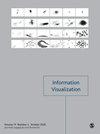Linking unstructured evidence to structured observations
IF 1.8
4区 计算机科学
Q3 COMPUTER SCIENCE, SOFTWARE ENGINEERING
引用次数: 2
Abstract
Many professionals, like journalists, writers, or consultants, need to acquire information from various sources, make sense of this unstructured evidence, structure their observations, and finally create and deliver their product, such as a report or a presentation. In formative interviews, we found that tools allowing structuring of observations are often disconnected from the corresponding evidence. Therefore, we designed a sensemaking environment with a flexible observation graph that visually ties together evidence in unstructured documents with the user’s structured knowledge. This is achieved through bi-directional deep links between highlighted document portions and nodes in the observation graph. In a controlled study, we compared users’ sensemaking strategies using either the observation graph or a simple text editor on a large display. Results show that the observation graph represents a holistic, compact representation of users’ observations, which can be linked to unstructured evidence on demand. In contrast, users taking textual notes required much more display space to spatially organize source documents containing unstructured evidence. This implies that spatial organization is a powerful strategy to structure observations even if the available space is limited.将非结构化证据与结构化观察联系起来
许多专业人士,如记者、作家或顾问,需要从各种来源获取信息,理解这些非结构化的证据,构建他们的观察结果,并最终创建和交付他们的产品,如报告或演示。在形成性访谈中,我们发现允许构建观察结果的工具往往与相应的证据脱节。因此,我们设计了一个具有灵活观察图的感知环境,该观察图在视觉上将非结构化文档中的证据与用户的结构化知识联系在一起。这是通过高亮显示的文档部分和观察图中的节点之间的双向深度链接实现的。在一项对照研究中,我们在大屏幕上使用观察图或简单的文本编辑器比较了用户的感知策略。结果表明,观察图代表了用户观察的整体、紧凑的表示,可以根据需要将其与非结构化证据联系起来。相比之下,做文本笔记的用户需要更多的显示空间来空间组织包含非结构化证据的源文档。这意味着,即使可用空间有限,空间组织也是构建观测的有力策略。
本文章由计算机程序翻译,如有差异,请以英文原文为准。
求助全文
约1分钟内获得全文
求助全文
来源期刊

Information Visualization
COMPUTER SCIENCE, SOFTWARE ENGINEERING-
CiteScore
5.40
自引率
0.00%
发文量
16
审稿时长
>12 weeks
期刊介绍:
Information Visualization is essential reading for researchers and practitioners of information visualization and is of interest to computer scientists and data analysts working on related specialisms. This journal is an international, peer-reviewed journal publishing articles on fundamental research and applications of information visualization. The journal acts as a dedicated forum for the theories, methodologies, techniques and evaluations of information visualization and its applications.
The journal is a core vehicle for developing a generic research agenda for the field by identifying and developing the unique and significant aspects of information visualization. Emphasis is placed on interdisciplinary material and on the close connection between theory and practice.
This journal is a member of the Committee on Publication Ethics (COPE).
 求助内容:
求助内容: 应助结果提醒方式:
应助结果提醒方式:


